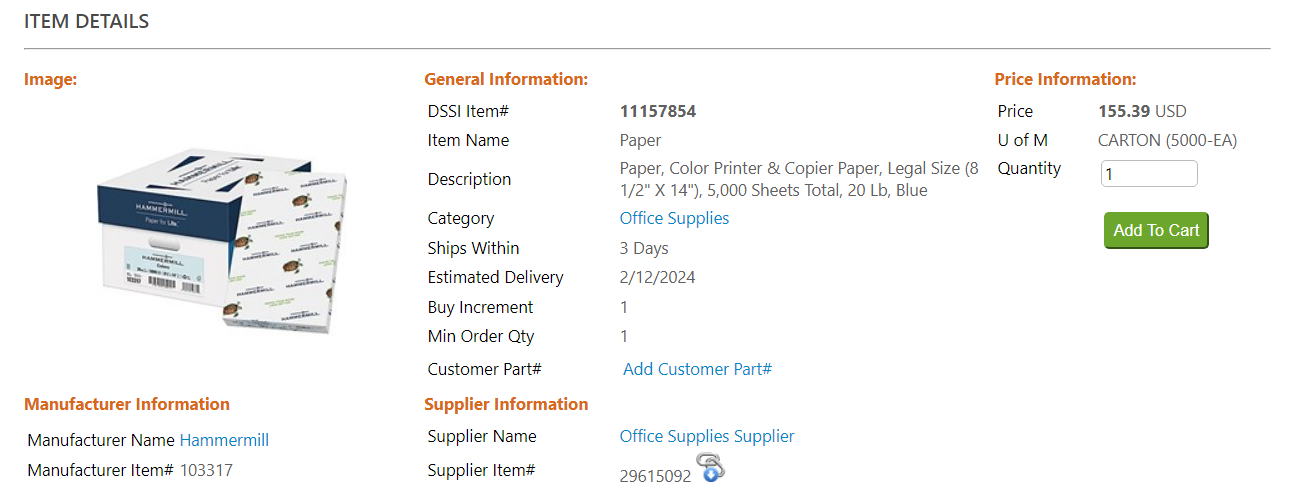What is Item Master
Amicus's Item Master
Amicus has been performing item master management since early 1990's. Our item master discipline is unique in the industry and we manage each item by the manufacturer name and manufacturer part number. Amicus's network of suppliers consists of over 25000 suppliers globally so in addition to the manufacturer information users can also view the supplier provided information.Why is item master discipline important?
There are many reasons why item master discipline is important. Here are just a few:
- Improved accuracy: Accurate item master data can help to improve the accuracy of your inventory records. This can lead to fewer errors in picking, packing, and shipping.
- Reduced costs: Inaccurate item master data can lead to a number of costly errors, such as overstocking or understocking items. Item master discipline can help to prevent these errors.
- Increased efficiency: Accurate item master data can help to improve the efficiency of your inventory operations. This can lead to faster order processing times and lower shipping costs.
- Better decision-making: Accurate item master data can help you to make better decisions about your inventory. For example, you can use item master data to identify slow-moving items that can be discounted or removed from inventory.
How to achieve item master discipline?
There are a number of things you can do to achieve item master discipline. The expectations from the user community have changed over the years and they are looking for good accurate item descriptions, manufacturer name and manufacturer part number so they can appropriately source the items. Certain suppliers and distributors only share their own part number making competitive sourcing a big challenge. Here are a few tips:
- Use a master data management (MDM) tool: An MDM tool can help you to centralize and manage your item master data. Make sure the tool has the ability to capture all necessary attributes including the manufacturer part number and supplier part number.
- Establish a clear ownership model: Determine who is responsible for maintaining the accuracy of your item master data. Large organizations may have dedicated content management teams whereas others can assign appropriate ownership based on item category or based on your buyers responsible for maintaining the supplier relationship.
- Set standards: Define clear standards for your item master data. This includes things like data format, naming conventions, and required fields.
- Train your employees: Train your employees on the importance of item master discipline and how to maintain accurate data.
- Regularly review your data: Regularly review your item master data to identify and correct any errors and remove duplicate content unless its absolutely necessary because certain items may be part of VMI program or may have additional quantity discounts associated.
How is Amicus different from its competitors?
Amicus's Item Master tools have been built and improved over the years based on feedback from its clients and need to support not only quality item content but also store its clients inventory part numbers and last paid price so it can report cost savings for each location. Here are some key differences:
- Master data management: Amicus's MDM tool capture all necessary item attributes including a good item description, manufacturer name, manufacturer part number, supplier, supplier part number, minimum order quantity, buy increment, ships within time and image. This allows the users to find the items they wish to purchase more easily.
- Managed/Directed: Amicus ensures each item is classified under either Managed Spend/Directed Spend.
- Client Specific Attributes: Amicus builds a curated catalog for each customer using the content from its Item Master. Amicus's technology enables us to maintain our clients unqiue site-specific or global ERP part numbers as well as the last paid or published price. This allows us to accurately report cost savings for each transaction.
- Ownership: Amicus has a team of category managers and buyers who have ownership over the item content. Depending on their authorization levels, the buyers can manage most of the item attributes.
- Content Standards: Amicus relies significantly on suppliers and large distributors to provide accurate item data. If the suppliers are unable to provide the essential details then Amicus buyers are responsible for identifying the necessary item attributes and maintaining them in the item master.
- Buyer Training: Amicus conducts periodical training sessions for its purchasing team members to ensure they are aware of the content quality standards required for managed and directed spend items in the catalog.
By taking the time to implement and maintain item master discipline, you can improve the accuracy, efficiency, and cost-effectiveness of your inventory operations.

